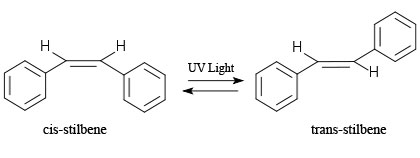Optical brightening agents are additives which are used in the paper industries to enhance whitening effects of papers. These chemical compounds absorb light in the ultraviolet and violet region (usually 340-370nm) and re-emit light in the blue region (typically 420-470 nm). It gives a fluorescent effect that masks the inherent yellowness of the fiber and enhances the brightness of the paper product. They not only used in paper but also used in plastics, textiles, laundry detergents. They are also known as optical brighteners, artificial whiteners. It is one kind of coating agent.

The optical brighteners can be applied in either the wet end or dry end or both end. If you want to internal brightness then you have to add them to the stock in wet end. Many paper manufactures use them in dry end at the size press or calender stack as surface coating. The dry end application is more economical compare to the wet end because in the dry end the chemical are used on the outer surface fiber in lieu of whole fiber content for reflects the ultraviolet light. However some manufacturers use a combination treatment; they use both the wet and dry end.
Types of optical brightening agents
The optical brighteners that are used in paper industries can be sort into three types based on the sulfonic groups. All of them contain stilbene structure.
Disulfonated OBAs
This OBAs contains two sulphonic groups. They are hydrophobic and have a very good affinity. The solubility is very low. Normally it is used in wet end.
Tetrasulfonated types
This OBAs contains four sulphonic groups. It has medium affinity and good solubility so ideal for paper industries both in wet end and dry end. They are suitable for neutral or alkaline pH medium. It is most common type of OBAs that are used in paper and paper board.
Hexasulfonated OBAs
hexasulfonated OBAs contains six sulphonic groups. It is special type of brightener which has excellent solubility. Mostly it is used in those papers where high brightness is required such as photographic paper. They are used in dry end as coating.
Optical brightener’s chemistry
We know that optical brightening agents are stilbene derivatives. The stilbene is a diphenylethene which consist two stereo-isomer – trans-isomer and cis-isomer. Between these two configurations, the trans-isomer can exhibits strong fluorescence whereas the cis-isomer does not exhibit fluorescence. The trans configuration is more stable than cis configuration but when the uv light applied on the trans configuration then it become electronically exited and converted into cis configuration. Consequently the fluorescence phenomenon occurs in. The visible blue light effectively neutralizes the cream color or yellowish hue of the paper fiber.

Disadvantage
All the optical brightening agents are dyestuffs. As like most of the other colorants they also degraded by oxygen in air slowly. So after several years or months, the increasing brightness of the paper with optical brighteners will decrease. As a result the printed paper will not look good. Thus some people does not like print on the paper with artificial brightness. Similarly it is not useful in photographic or art applications. On the other hand in some places or some printers the OBAs would not work. Therefore the paper will appear its normal brightness. This is the reason why some printed papers have a yellowish hue. Although the OBAs are efficient on bleached chemical pulps but it is ineffective on unbleached pulp due to lignin is also an ultraviolet absorbing agent.
Finally
Normally the consumers expect higher brightness paper and paper boards. But all the time the brightness of pulp and fillers cannot fulfill the targeted brightness. Therefore the manufactures use different type of optical brightening agents. Most of the paper manufacturers add these chemicals in order to make paper appear brighter.

I enjoyed your article. I work in a the fine art paper industry and OBS’s are a point of contention. Since many specialty papers are produced in USA commercial mills. OBA’s seem to be in the system and they are difficult to avoid. Do you have any visual examples of a before and after effects of papers with OBA’s.
paper Optical brightening
NAYAB PAPER & GRAPHICS
R-14 Pioneer Cottages
3rd Floor
Mosmiyat Chowk,
Main University Road, Karachi.
Karachi 75270
PAKISTAN
WhatsApp Mobile # 92-333-2246211 e-mail: nayabpap@yahoo.com nayabp@yahoo.com
Dear Sir,
Find below required your Complete details for below paper with C&FC3% MT Karachi, prices,
Assorted color paper 70 gsm, in reels size 25 and 50 gsm, required quantity 25 MT, difference colors samples required for selection
Assorted Color paper 70,75,80 gsm, A-4 size 500 sheets ream also in reels and White
Book Paper 42 AND 45 GSM IN REELS SIZES 17,26,38 INCHES
Offset Paper 60,65,70,75,80,90 GSM IN SHEETS AND REELS
Copy paper white and color A-4 size 70,75,80 gsm 500 sheets ream pack
Colors Paper 70 gsm, in reels size 25 and 50 inches for 25 MMT
Also same as above A-4 size 500 sheets ream pack White also
Also required your current stock lots Newsprint Paper, Offset Paper and other send list with C&FC3% MT Karachi, prices.
Best regards,
Nayab Jafri